

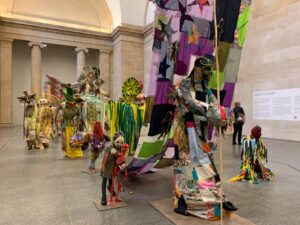
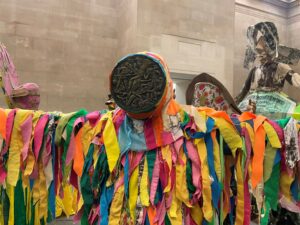
On our trip to London one of the most exciting experiences was seeing Hew Locke’s “Procession”
filling the central court of the Tate Britain with its brilliant collaged figures entirely constructed from recycled materials.
The Tate is on the site of a former prison, which I wrote about in 2017. Now we see it as the product of capitalism and specifically the exploitation of black labor in the sugar industry. Henry Tate was a sugar magnate.
Hew Locke: The Procession “What I try to do in my work is mix ideas of attraction and ideas of discomfort-colourful and attractive but strangely, scarily surreal at the same time.”
The Procession has 150 figures, no two are the same
It includes painting, drawing, printmaking, sculpture. It is entirely imaginary, there is no particular culture or mask quoted. The Procession can be almost a funeral.
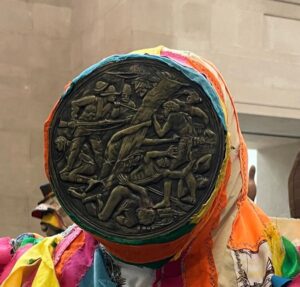
Celebration, worship, protest, mourning, escape Imaginary people
Starting point Henry Tate, sugar refining magnate. “reflect on the cycles of history and the ebb and flow of cultures, people, finance and power.”
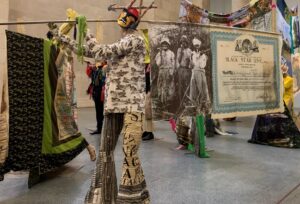
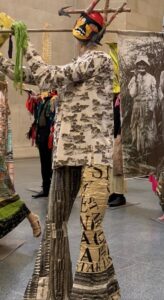
Note the pants on this figure. It is the famous image of the Middle Passage
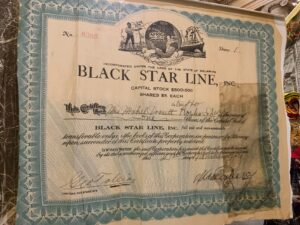
The famous Back to Africa movement led by Marcus Garvey used these certificates for joining
The artist bought shares from dead companies included the Black Star line.
Text below is from Tate:
“The figures travel through
space but also through time. They carry historical and cultural baggage: the evidence of global financial and violent colonial control embellishes their clothes and banners.
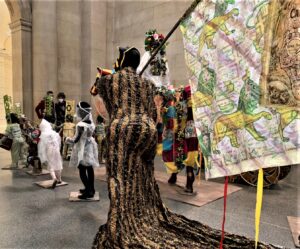
This figure with the striped dress has a cat head. See next image
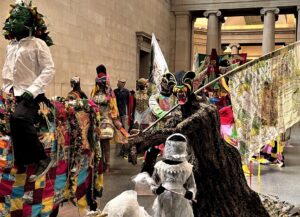
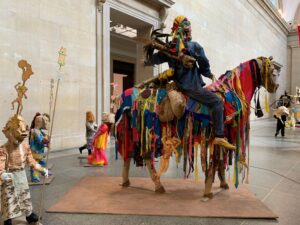
“Images of the colonial architecture of Locke’s childhood Guyana emblazon the flags and their bearers, its flooded fields and rotten wooden walls vanishing under rising sea levels. Despite this, their attire and stance suggest power and self-assertion.

Chest labelled East Indies Sugar
Locke occupies a space that was founded from wealth derived form an industry built on the labour of enslaved African people and their descendants and which subsequently relied on the indentured labour of Asian people”
Here is a misshapen globe
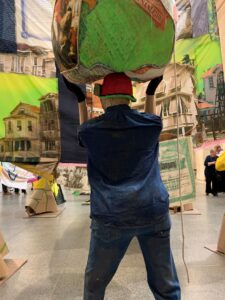
Locke says he “Makes links with the historical after-effects of the sugar business, almost drawing it out of the walls of the building.”
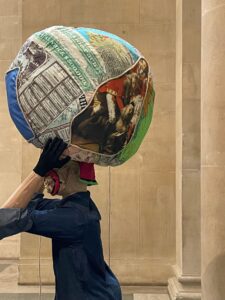
“The Procession” also carries Locke’s own past artistic journey with imagery linked to his previous work incorporating statues, rising sea levels, Carnival and the military.
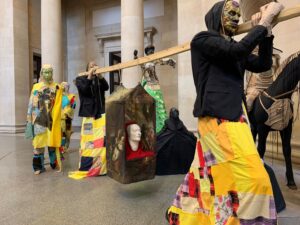
Leonardo self portrait inside the niche. Cut up Benjamin West painting on another
“While being marked by history, The Procession’s participants are not constrained by it. These fragments come together to usher new meanings and sensations, stirring collective memories, fears and desires.”
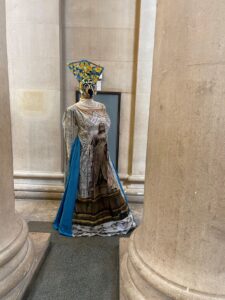
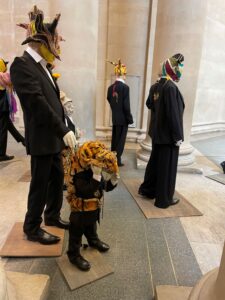
“The work evokes real events and histories and yet presents them as aesthetic fiction. As we join “The Procession” and Locke’s artistic imagination begins to work on us, the figures invite us to walk alongside them for a while, into an enlarged vision of an imagined future.”
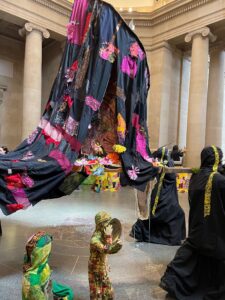
“The influences of both Indian and Indo-Caribbean culture can be seen in The Procession, as in much of Locke’s work to date. It is unclear whether the procession participants are wearing masks or if these are their true faces. Several figures and costumes within the Procession reference specific Caribbean Carnival characters from across the region.
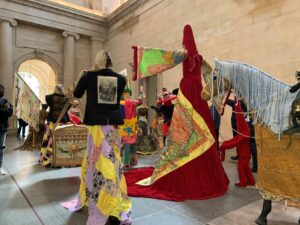
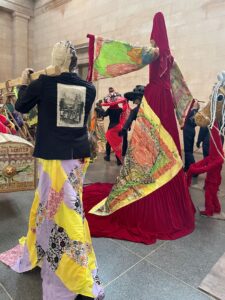
These include Mother Sally in her voluminous dress, Midnight Robber, wearing a huge brimmed hat, Pitchy Patchy, dressed in a suit made of tattered, colourful pieces of cloth and Sailor Mas, inspired by British, French and American naval staff. Each has its histories and its portrayal differs across the Caribbean”
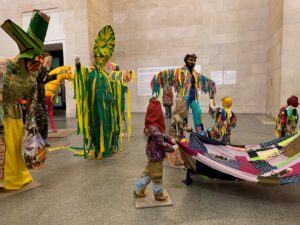
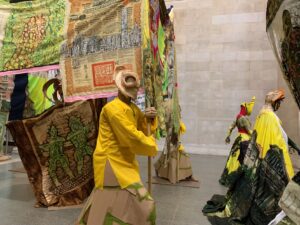
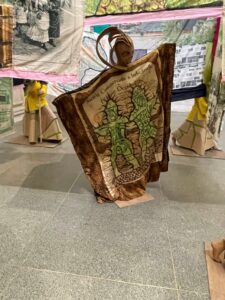
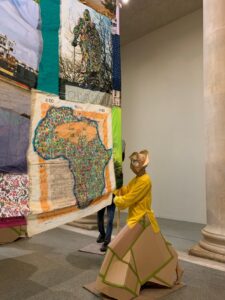
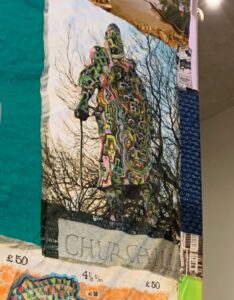
Churchill statue in background that artist has covered with graffiti
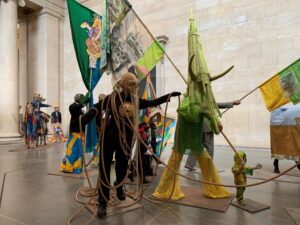
This suggests the climate crisis another Locke theme
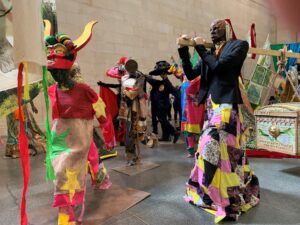
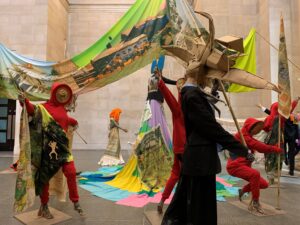
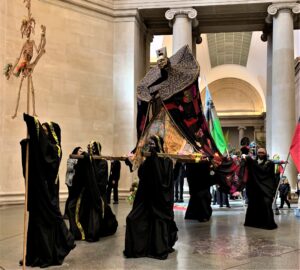
I will stop here. It is impossible to actually take it all in.